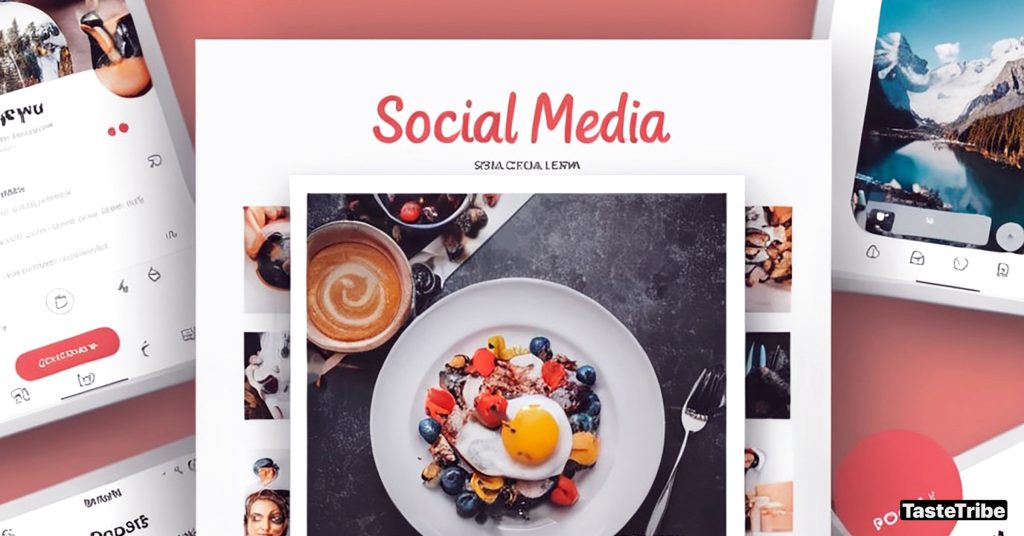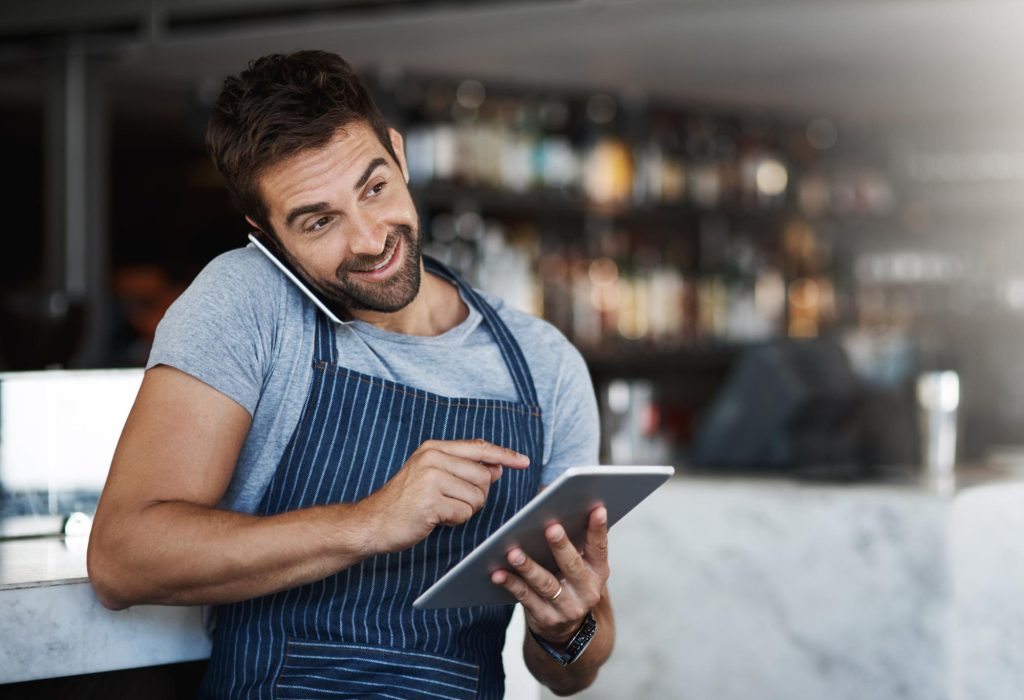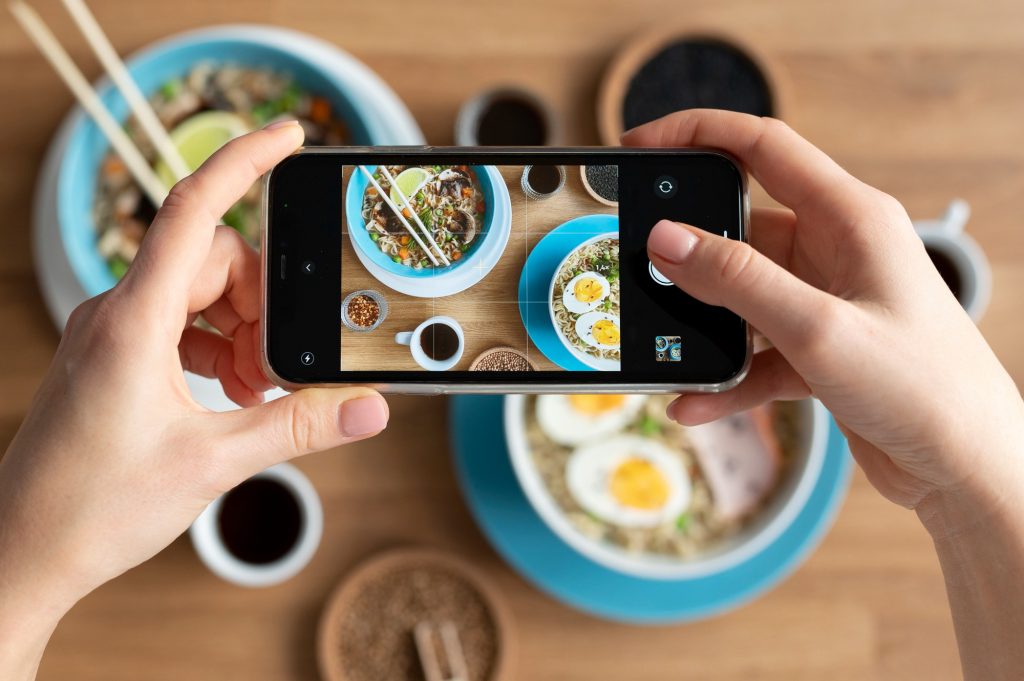
In 2024, a restaurant’s online presence is no longer optional. As consumer behavior continues to shift toward digital-first interactions, it’s critical for restaurants to adapt to meet the expectations of modern diners. A robust, user-friendly online presence is key to attracting and retaining customers. With social media platforms, search engines, and third-party apps becoming central to decision-making, restaurants must step up their digital game to stay competitive.
This blog explores what customers expect from a restaurant’s online presence in 2024 and how restaurants can meet those expectations.
1. A Mobile-Optimized Website: The Foundation of a Great Experience
The Rise of Mobile-First Browsing
With more than 60% of restaurant searches happening on mobile devices, it’s crucial that your website is optimized for mobile. Mobile-first browsing is no longer a trend but a norm. In fact, potential customers are likely to interact with your website for the first time through their smartphones. If your website isn’t optimized for mobile, you’re losing customers before they even make it to your front door.
What Customers Expect from a Mobile Experience
Customers expect a seamless experience on their smartphones, which means quick load times, intuitive navigation, and easy access to essential information. A mobile-optimized website should automatically adjust to different screen sizes, ensuring that everything from the menu to your contact information is clear and accessible. Key information—such as location, hours, and booking options—should be easy to find without excessive scrolling or searching.
A slow, clunky website that doesn’t perform well on mobile devices can frustrate potential diners, leading them to choose competitors with better mobile experiences. A frictionless mobile browsing experience is essential, as the attention span of mobile users is shorter, and they expect to find what they need quickly.
Simplifying Navigation and Searchability
When visitors land on your website via mobile, they expect to find answers fast. This includes a clear, concise layout where they can access key details like your menu, hours of operation, address, and reservation system. An overly complicated design with hidden information will drive potential diners away. Implementing a user-friendly menu that adapts to mobile scrolling is key to keeping users engaged.
Additionally, consider adding features like a “Click to Call” button, GPS-powered directions, and a reservation system that loads quickly. Your goal should be to make it as easy as possible for potential customers to access the information they need in just a few taps.
2. Up-to-Date Information and Transparency: Trust Is Everything
Why Accurate Information Is Vital
In the fast-paced restaurant industry, things change frequently—menus rotate, hours adjust, and special events come and go. Modern consumers expect the information they find online to be accurate and up-to-date. Whether they’re visiting your website, checking your Google listing, or browsing your social media pages, diners rely on this information to make decisions. Outdated hours, incorrect contact information, or old menus can lead to confusion and missed opportunities.
Customers have come to expect transparency from the brands they engage with, and restaurants are no exception. A potential diner’s experience starts the moment they search for your restaurant online, so providing accurate, transparent information is key to building trust.
Keeping Information Consistent Across Platforms
To keep customers satisfied and informed, it’s essential to regularly update your website, social profiles, and listings across various platforms. This includes ensuring your opening hours are correct, updating your menu with seasonal dishes, and making sure your contact information is accurate. Inconsistencies between platforms like Google My Business, Yelp, and Facebook can frustrate potential diners and lead to negative experiences.
For example, if a customer looks at your Google listing, sees you’re open, and drives to your restaurant only to find it closed, they’re likely to leave a bad review. This type of inconsistency damages your reputation and could easily be avoided by regularly updating your online profiles.
Offering Real-Time Updates and Transparency
Providing transparency about any changes—such as temporary closures, menu updates, or special events—can help you build trust and prevent misunderstandings. In 2024, customers appreciate being kept in the loop, especially when restaurants communicate clearly and consistently. A well-maintained blog or updates section on your website can help you convey these changes, while timely social media posts can ensure that diners always have the latest information.
3. Easy Online Reservations and Ordering Systems: The Convenience Factor

The Rise of Online Reservations and Ordering
In 2024, convenience is king. Customers expect to be able to book a table or order food online with just a few clicks. An intuitive, easy-to-use online reservation system is a must for attracting and retaining diners. Customers want to avoid the hassle of calling in to book a table or place an order, and they appreciate automated confirmations that assure them their reservation or order has been received.
With third-party apps like OpenTable, Resy, and Google’s reservation integration, restaurants have a host of options to implement user-friendly systems. These platforms offer real-time availability, quick reservations, and the ability to modify bookings seamlessly.
Online Ordering: Growing Takeout and Delivery Demand
Beyond reservations, the demand for online ordering—both takeout and delivery—continues to grow. Offering easy online ordering through your website or third-party services like Uber Eats or DoorDash can help you capture this growing market. In 2024, customers expect an effortless ordering experience, where they can browse your menu, select items, and pay without unnecessary steps or delays.
The Value of Integrated Systems
A seamless ordering system can make the difference between a customer choosing your restaurant or moving on to a competitor. Investing in an integrated online reservation system or food ordering platform not only improves the customer experience but also streamlines your operations. By syncing your reservation system with your website and third-party platforms, you can prevent overbooking and ensure smooth order management, avoiding potential customer dissatisfaction.
4. Engaging and Relevant Social Media Presence: Building Your Brand
Why Social Media Matters in 2024
Social media is one of the most important tools for engaging with customers in 2024. Restaurants need more than just an active presence—they need to post consistently and offer content that is relevant, visually appealing, and engaging. Social media platforms like Instagram, TikTok, and Facebook are ideal for showcasing not only your dishes but also the culture, atmosphere, and people behind your restaurant.
Creating a Consistent Posting Schedule
An active social media presence allows you to connect with your audience, share updates on specials or events, and encourage user-generated content. However, being active doesn’t just mean posting every now and then. Customers expect consistency. By creating a consistent posting schedule, featuring your best dishes, and offering behind-the-scenes looks at your restaurant, you can build a loyal online community and drive real-world traffic to your restaurant.
Restaurants can no longer rely solely on static images or text-heavy posts. Videos, live streams, and user-generated content have become essential elements of social media engagement. Instagram Reels and TikTok videos that highlight special menu items, give glimpses into the kitchen, or showcase customer experiences can drive significant engagement.
Engaging Directly with Your Audience
Customers also appreciate when restaurants engage with them directly. This could include responding to comments, resharing user-generated posts, and acknowledging feedback. Direct engagement with your followers helps humanize your brand and fosters deeper connections. Customers who feel heard and appreciated are more likely to become loyal patrons.
By regularly responding to reviews and interacting with your followers on social media, you create a two-way conversation that keeps your audience engaged.
5. High-Quality Visual Content: First Impressions Matter

Why Visual Content Is Key
In a visually driven digital world, customers expect restaurants to showcase their best side online. High-quality photos and videos of your food, drinks, and dining space can create a strong first impression and entice customers to visit. Grainy or poorly lit images no longer meet the standard for today’s diners, who are used to seeing Instagram-worthy shots of meals that look as good as they taste.
Investing in Professional Photography
In 2024, investing in professional photography or using high-quality equipment to capture images can significantly boost your online presence. Photos should highlight the colors, textures, and presentation of your dishes, while videos can give customers a more immersive experience—whether through a quick tour of your restaurant, a behind-the-scenes peek into the kitchen, or a time-lapse of your chefs at work.
High-quality visuals not only showcase your restaurant in the best light but also make your content more shareable. When customers see enticing images of your food, they’re more likely to engage with your content and share it with their friends and followers.
Embracing Video Content
Short-form video content is also becoming increasingly important for restaurants. Whether through Instagram Reels, TikTok, or YouTube Shorts, videos allow restaurants to tell a story, show off their atmosphere, and engage with their audience in a more interactive way. A well-executed video can make a lasting impression and encourage viewers to visit your restaurant.
6. Authentic Customer Reviews and Testimonials: Building Trust
The Importance of Online Reviews
Online reviews are critical to the modern dining experience. Consumers are increasingly reliant on reviews from platforms like Google, Yelp, and TripAdvisor to make decisions about where to eat. In fact, over 90% of diners check reviews before visiting a restaurant. Authentic, positive reviews build trust, while negative reviews offer you the chance to show how you handle customer feedback and improve service.
Managing Reviews and Building Reputation
Encouraging satisfied customers to leave reviews can enhance your online reputation. It’s equally important to be proactive about responding to both positive and negative reviews, demonstrating that you value customer feedback and are committed to providing the best experience possible. Managing your online reviews with care can help convert potential customers who may be on the fence about visiting your restaurant.
By responding to reviews—both good and bad—you not only show that you care about your customer experience, but you also build your brand’s transparency. Customers appreciate businesses that engage with feedback openly, and this will help build credibility and trust in your restaurant.
Read more: The Power of Influencer Reviews
7. Seamless Integration with Third-Party Platforms: Reaching a Wider Audience
The Role of Third-Party Platforms in 2024
In addition to having a strong website and social media presence, your restaurant should integrate smoothly with third-party platforms such as Google, Yelp, and delivery services like Uber Eats or DoorDash. These platforms are often the first point of contact for customers searching for dining options, and they expect a seamless experience from discovery to ordering.
Ensuring Accuracy and Ease of Use
Making sure your listings on third-party platforms are accurate and that your restaurant is easy to find is crucial. If you offer delivery or pickup services, ensure that your integration with these apps is smooth, providing a hassle-free experience for customers. It’s also a good idea to sync your reservation and ordering systems with these platforms to avoid confusion and streamline operations.
For example, make sure your menu, hours of operation, and contact details are updated across platforms. Outdated or inaccurate information could lead to lost business and negative reviews.
8. Emphasis on Sustainability and Values: Aligning with Customer Expectations
The Rise of Value-Driven Dining
Consumers are more value-driven than ever before. In 2024, many customers expect the businesses they support to align with their values, particularly when it comes to sustainability. Diners want to know that the restaurants they visit care about reducing waste, sourcing ingredients locally, and minimizing their environmental impact.
How to Showcase Your Sustainability Efforts
Being transparent about your sustainability efforts—whether through locally sourced ingredients, eco-friendly packaging, or reducing food waste—can resonate with customers who prioritize these values. Highlighting these efforts on your website and social media can set you apart from competitors and attract diners who share your commitment to making a positive impact on the planet.
Restaurants that emphasize their environmental impact and values on their online platforms tend to resonate more with modern consumers who are looking to support responsible businesses.
Conclusion
In 2024, customers expect a restaurant’s online presence to be more than just a digital brochure—it needs to provide a seamless, engaging experience from start to finish. From mobile optimization and easy online reservations to engaging social media and authentic reviews, your restaurant’s digital footprint plays a crucial role in attracting and retaining customers. By meeting these expectations, you’ll not only improve your online presence but also create lasting relationships with modern diners who increasingly prioritize convenience, transparency, and sustainability.
Ready To Get More Diners?